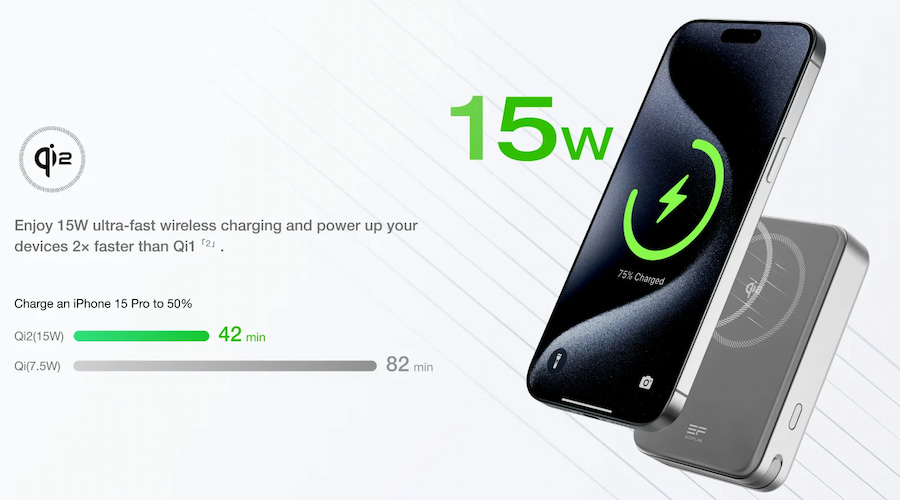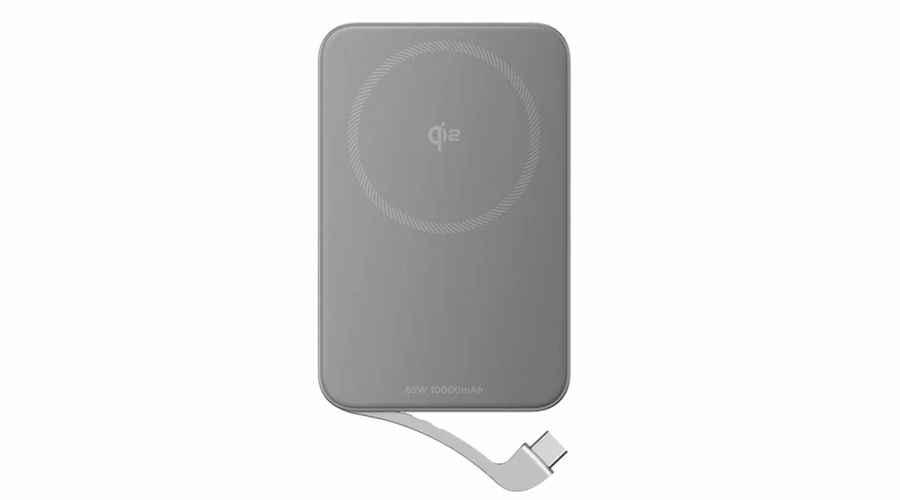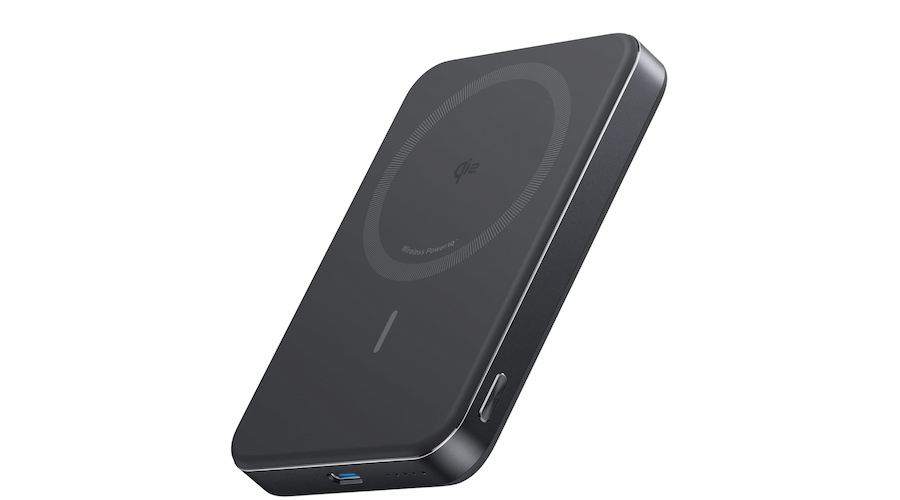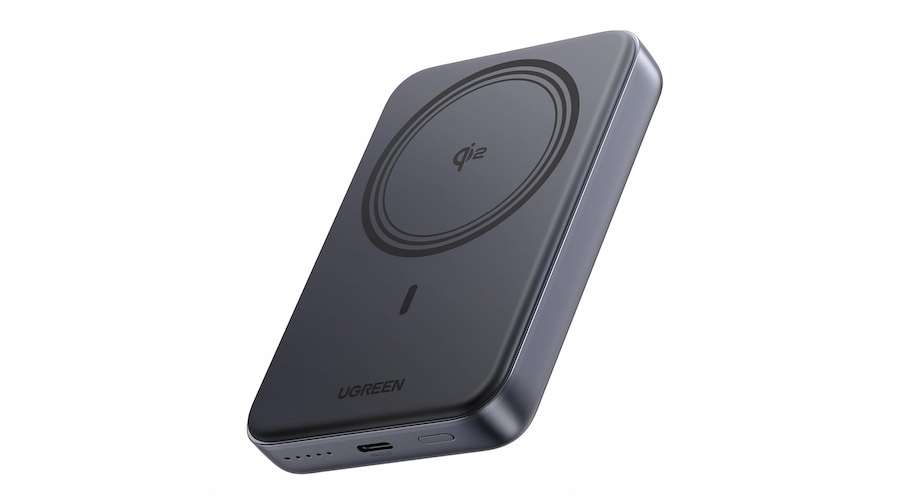Qi2 Wireless Charging Explained: What It Offers & Why You Should Care
If you’re rocking an iPhone 12 or later (the newest 16e aside), you might already know the dance: drop your phone onto a MagSafe puck, feel the click, and watch power flow in—no cable wrangling required. MagSafe took the original Qi standard and added magnets plus steadier, faster power, turning wireless charging from “nice‑to‑have” into an everyday habit.
So where does Qi2 wireless charging come in? In this guide, we’ll walk you through everything you need to know about the new standard—what it changes, what stays the same, and whether it’s a good fit for your needs. We’ll also highlight some of the top Qi2 power banks to look out for in 2025.
What Is Qi2 Wireless Charging?
Before you meet Qi2 wireless charging, let’s rewind a bit.
Qi (pronounced “chee”) is the original open standard the Wireless Power Consortium released back in 2010. Early pads trickled out just 5 W, and you had to hunt for the sweet spot—any coil mis-match slowed things down. Over the years the spec climbed to 15 W, but perfect placement still rested on you.
MagSafe arrived with the iPhone 12 series in 2020 and cracked that alignment problem. A ring of magnets inside the phone snapped it to Apple’s puck and kept the current flowing at a steady 15 W. It was still Qi under the hood, just souped-up and, crucially, Apple-only. If you owned an Android, those magnets did nothing for you.
Now comes Qi2. Apple donated its magnetic know-how to the Wireless Power Consortium, which folded it into Qi v2.0’s Magnetic Power Profile. In plain English, Qi2 gives every brand the MagSafe experience: snap-on alignment, reliable 15-watt charging, and tighter energy efficiency—without locking you into one ecosystem.


Key Features Compared – Qi vs Qi2 vs MagSafe
Here’s a quick side‑by‑side so you can see what actually changed:
Feature | Qi | Qi2 | MagSafe |
Peak phone power | 5W to 15W (device-dependent) 7.5W for iPhones | 15W universal across certified phones 15W for MagSafe iPhones | 15W for iPhone 12–16 7.5W on earlier Qi iPhones and the 16e |
Alignment aid | None—manual positioning | Standardised ring magnets on every Qi2 device | Built-in ring magnets (Apple only) |
Energy efficiency | Drops when coils are off-centre | Higher efficiency for all brands thanks to perfect alignment | Higher, but limited to Apple hardware |
Safety checks | Foreign-object detection, temp limits | Stricter certification + magnetic attachment safety | Foreign object detection, temp limits, magnetic attachment safety |
Ecosystem reach | Thousands of pads from many makers | Open to all brands—iOS, Android, accessories alike | Apple accessories plus licensed third-parties |
Backward compatibility | — | Charges legacy Qi phones at legacy speed | Works as a standard Qi charger for older phones |
Is Qi2 a Good Choice for You?
Now that you understand what Qi2 is all about and how it compares to classic Qi and MagSafe, the next question is: should you jump on the Qi2 wireless charging train? Let’s break it down:
If you own (or plan to) a MagSafe-enabled iPhone (12-16)
In this case, Qi2 wireless charging for iPhone is basically built-in. You’ll get the same snap-on convenience and 15-watt speed you know from MagSafe, but now every Qi2-certified pad, stand, wireless power bank, or multi-device station charges at full tilt.
The upshot is more accessory choice and (usually) lower prices, because Apple is no longer the gatekeeper. There’s already a wide range of third-party Qi2 stands and power banks on the shelf.
If you’re on Android
Samsung’s new Galaxy S25 family supports Qi2, but the magnets live inside Samsung’s first-party cases, not the phone itself—buy the case or lose the snap-on benefit. Other makers, like Google and OnePlus, haven’t crossed over yet, though industry analysts expect more Qi2 flagships coming soon.
Choose Qi2 if…
Your next phone already supports it (iPhone 12-16 today, many Android flagships tomorrow).
You want to cut the cable clutter and get a guaranteed 15W charging speed anytime anywhere.
You like magnetic snap-on convenience but want to shop beyond Apple’s offerings.
Stick with your current charger for now if…
Your daily drivers are older Qi only devices that max out at 7.5 W and won’t magnetically attach—and you’re not planning to upgrade soon.
You still lean on the absolute fastest charge times. Even the best Qi2 pad caps at 15W, while a USB-C PD brick can push 30–65 W (and higher) over a cable.
You’ve already invested in a solid MagSafe setup.
Best Qi2 Wireless Charging Power Banks in 2025
If you’re an iPhone user ready to invest in Qi2 accessories, power banks are one of the best places to start. Just snap a Qi2 battery pack onto the back of your phone and it’ll start charging at 15W—no cords, no fuss.
Of course, the right power bank should keep up with your life, whether you’re scrolling on your commute, watching movies on a red-eye flight, or trying to keep your laptop alive. The models below all add Qi2 magnetic charging to that mix, so you can leave the coil-hunting behind.
1. EcoFlow Rapid Magnetic Power Bank 10,000mAh
You notice the EcoFlow Rapid Magnetic Power Bank’s party trick the moment you snap it to an iPhone 15 Pro: the phone sticks firmly, the display lights up, and a live read-out tells you exactly how long it’ll take to hit 100 per cent.
The built-in USB-C cable can push 65W—handy when your 13-inch MacBook Air starts begging for juice on a long flight—while the Qi2 pad delivers a reliable 15W without you baby-sitting the alignment. When the power bank itself is flat, it sips 65W in reverse, getting from empty to roughly 70 per cent during a quick coffee stop (about 33 minutes).
An aluminium kickstand props the whole slab up for hands-free streaming, and the magnetic bond uses stronger-than-usual N52 magnets, so the pack doesn’t shift if you keep doom-scrolling during the charge.


Key features:
15W Qi2 wireless pad for cable-free charging at full spec speed.
65W built-in USB-C cable (PD 3.0) charges an iPhone 15 Pro to ~50 % in ~25 min or gives a MacBook Air a short-haul boost.
Flash self-recharge: 0 → 70 % in ~33 min when fed 65W, reducing “tether time” before you head out.
Smart TFT display + EcoFlow app shows remaining capacity, live input/output watts, and lets you personalise the boot screen.
Kickstand & N52 magnets keep phone and bank locked together in portrait or landscape without sliding.
Real-time temperature monitoring (50 checks / sec) and car-grade low-impedance cells minimise heat build-up.
Compact build: 108 × 70 × 22.9 mm, 258 g—pocketable yet laptop-capable.
2. Anker MagGo Qi2 Power Bank Ultra‑Slim 10,000 mAh
Long workdays and weekend trips both ask the same question: how do you keep your phone alive without dragging a brick around? Anker’s Ultra-Slim MagGo answers by trimming the usual 10,000 mAh battery down to just 14.7 mm thick—roughly the width of two credit cards stacked together.
Slide it into a jeans pocket, then snap it on when your iPhone hits the red: the Qi2-certified pad pumps a steady 15W and sticks in place even while you scroll. When you need faster top-ups—say, an iPad on a café table—the USB-C port unleashes up to 30W PD, enough to add 50 percent to an iPhone 15 Pro in about 30 minutes.


Key features
Ultra-slim profile: 14.7 mm / ~200 g for true pocket carry.
15 W Qi2 magnetic charging—0→50 % on an iPhone 15 Pro in ~51 min.
30 W USB-C PD port for tablets, cameras, and quick self-recharge.
Matte UV finish, metal frame, plus aerogel insulation that stays cool to the touch.
3. UGREEN Qi2 Power Bank 10,000 mAh
If you just want a fuss-free top-up on the tram or during uni lectures, UGREEN’s Qi2 pack nails the basics without padding the price. At around 200 g and 20.3 mm thick it disappears into a hoodie pocket yet still carries enough juice for nearly two full iPhone charges.
Clip it onto any iPhone 12–16 and the 15W Qi2 magnets start pulling power. Need something faster? The lone USB-C port kicks out 20W via cable. A soft-touch silicone face stops scratches and feels grippy, while four LEDs keep you posted on capacity. Nothing fancy, just reliable, pocketable power at a friendly price.


Key features
Qi2-certified 15W wireless charging
20 W USB-C PD output for phones, tablets, or earbuds that need a cable.
Pocket-size & light (approx. 104 × 69 × 20 mm; 200 g) with a soft-touch, lint-resistant finish.
Simple LED fuel gauge
Conclusion
As you see, while Qi2 wireless charging is a big upgrade from Qi, it isn’t a moon‑shot leap beyond MagSafe, and that’s the point. It locks in the features you already like—precise magnetic alignment, consistent 15 W charging—and lets more phones and accessories join the party. If your current MagSafe gear works fine, you’re not missing out on new wattage records. But if you’re still struggling with tangled cables or hit‑or‑miss 7.5W Qi charging, the upgrade will be well worth it. Invest in one of our recommended Qi2 power banks and enjoy the same snap‑on convenience without the Apple‑only sticker.
FAQs
What is the difference between Qi and Qi2 charging?
Qi is the original open standard: drop your phone on a pad, hope the coils line up, and you’ll get anywhere from 5 W to 15 W depending on the phone and charger. Qi2 adds the Magnetic Power Profile Apple donated from MagSafe. A ring of magnets locks the phone to the sweet spot every time, so you keep a rock‑solid 15W and waste less energy as heat.
Are Qi2 chargers faster than MagSafe?
Not really. Both standards top out at 15W on most iPhones. The difference is that MagSafe is proprietary to Apple, while Qi2 offers the same 15W to any certified device—iOS or Android. The one exception is Apple’s latest MagSafe puck, which can push up to 25W on the iPhone 16 line; Qi2 still caps at 15 W for now. For every other phone, speed is effectively a draw.
How to know if a charger is Qi2?
Look for the logo – the new Qi2 symbol (a stylised “qi²”) must appear on the packaging or product.
Check the spec sheet – it should state “Qi2-certified” or list a Qi-ID number.
Verify in the WPC database – enter the model name at wirelesspowerconsortium.com to see if it passed certification.
Are Qi2 chargers worth it?
If your phone support Qi2—or you’re likely to upgrade soon—yes. You get the MagSafe‑style snap, reliable 15W speeds, and a charger that will work across Android and iOS for years to come. If your current devices top out at basic Qi (7.5W on iPhone, 10W on many Androids) and you’re happy with cable charging, there’s no urgent need to switch.